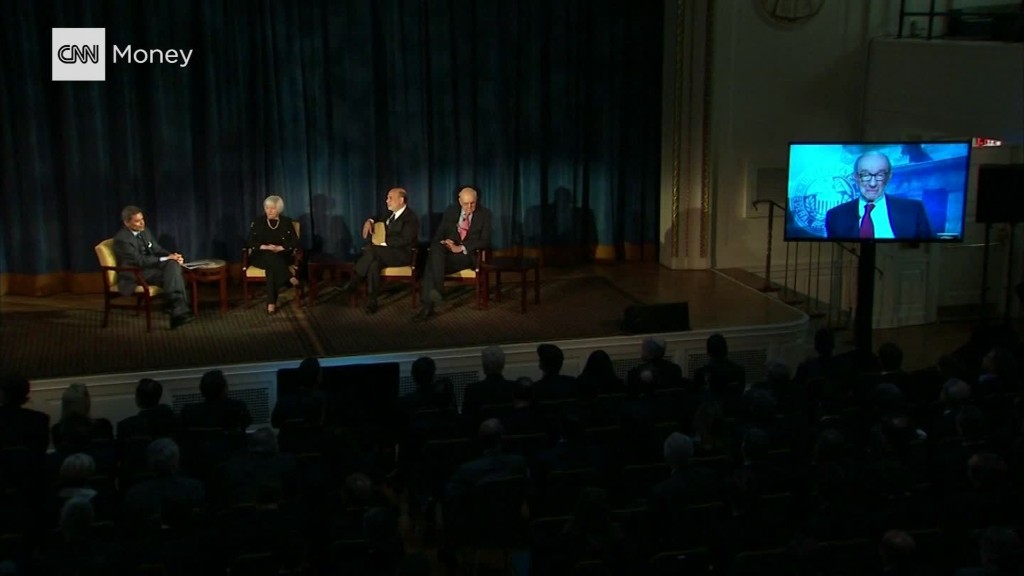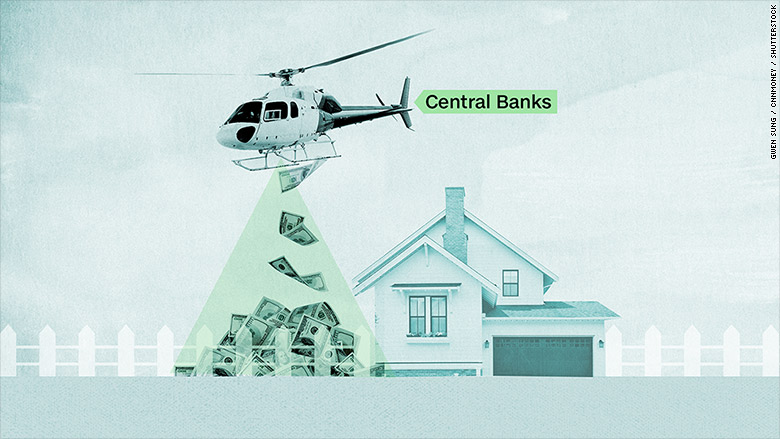
If the U.S. economy turns south in a big way, helicopters could be dropping cash over your neighborhood -- courtesy of the Federal Reserve.
That's at least the concept of helicopter money -- an unusual idea aimed at reviving economic growth, espoused by famed economist Milton Friedman. Fed Chair Janet Yellen has generally stayed away from endorsing this form of economic stimulus in the past. But on Wednesday, Yellen wouldn't rule it out as a possible option in an extreme circumstance.
"It is something that one might legitimately consider," Yellen said Wednesday. It was her most explicit comment as Fed Chair on the subject.
Helicopter money was first introduced in 1969 as a concept by Friedman. Here's the idea: the Fed would essentially write a huge check to the U.S. Treasury office, which would then send tax rebates (translation: cash) to millions of Americans.
The hope is that Americans spend the money, which drives up economic growth and inflation -- two things the Fed could use more of right now to justify rate hikes. Instead, growth and inflation are anemic and were key factors why Yellen and other Fed officials decided not to raise interest rates at the central bank's June meeting.
Related: No rate hike as Fed pares economic outlook
Yellen's predecessor, Ben Bernanke, too has endorsed the idea as a last resort option.
"Helicopter money could prove a valuable tool," Bernanke wrote in a blog post in April.
To be clear, it doesn't appear that the Fed will deploy a program like helicopter money any time soon. But keep in mind, the Fed isn't that far removed from taking what it's described as extraordinary measures to save the U.S. economy. In 2008, Bernanke put interest rates at zero and started a massive bond-buying program to stimulate growth.

Related: Helicopter money: Central banks' last resort
There's major risks to helicopter money, which some experts equate to money printing. It can create hyperinflation, where prices for gas, groceries and other goods shoot through the roof, and make the dollar less valuable.
That scenario has happened in countries like Venezuela and Argentina where central banks in the past have printed money, given to it the government which then gives it to citizens. Inflation skyrocketed in both countries. Still, those economies are very different from the U.S. and there isn't a precise historical comparison.
The problem for the Fed now is that it doesn't have very many tools left in the shed to fix the economy again if another recession comes soon. Many economists say there's a decent chance of a recession in 2017.
Related: 10 key facts about the U.S. economy
Interest rates are low and buying more bonds, known as quantitative easing or QE, appears to be losing its effect. In other words, there aren't many options left in the Fed toolkit.
And helicopter money might just be one that the Fed might have to lean on during a downturn.
One country that many economists have cited as a possible guinea pig for helicopter money is Japan. It's struggled with deflation and low growth for years. Japan's central bank has denied any interest in helicopter money.
Whether Japan or elsewhere, experts warn that helicopter money isn't a sound option, especially since central banks have taken nearly every action possible to revive the global economy in recent years.
"This may result in a further loss of the already wavering credibility of central banks," says Jeff Kleintop, chief global investment strategist at Charles Schwab.


